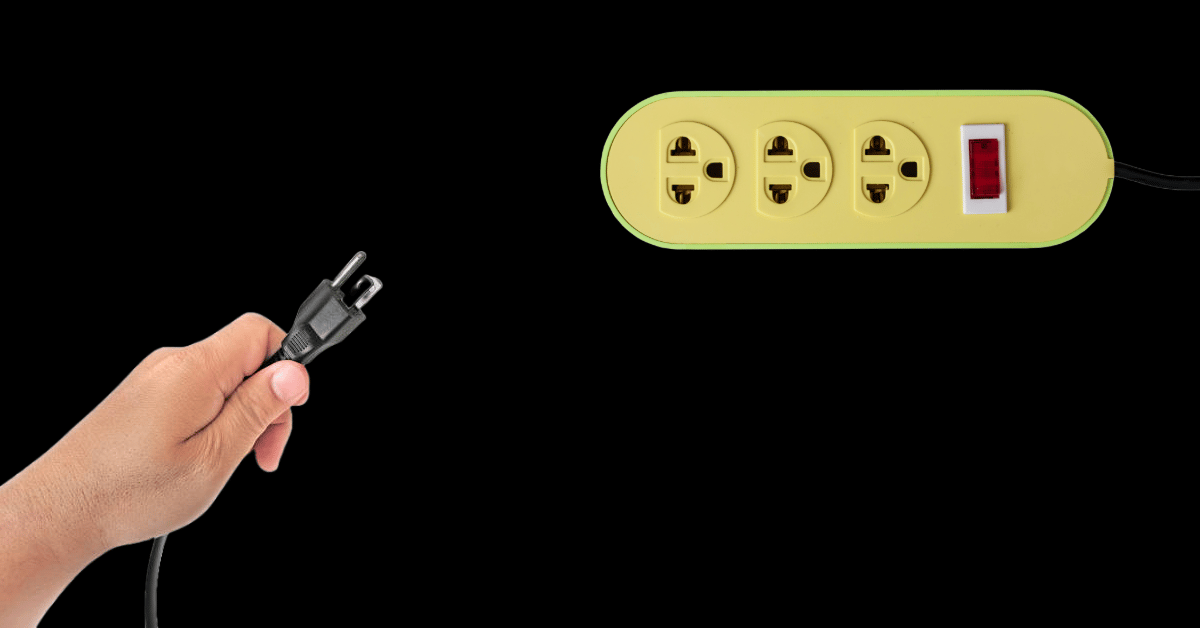
3 things my 24-hour ear infection taught me about B2b sales:
Ok, LinkedIn is kinda cringe, right? It’s just a bunch of people bragging about how “humbled and honoured” they are to get their latest promotion/pointless industry award/new friendship bracelet. Well, yeah, there is a good bit of that.
But it also happens to be the only place where you can talk directly to CEOs, directors, and decision makers in the biggest businesses in the world. And whether you’d like some of those people to be your future clients or your future boss, the best way to get on their radar is to, well, be on LinkedIn (bonus points if you can do that without being cringe).
Which is exactly why our next workshop will show you everything you need to know when it comes to building your personal brand on the platform. 3 Sept. $59 NZD. See you there.
- Charlotte Ellis, Editor ♡
WHAT’S HAPPENING IN MARKETING TODAY?
TikTok proves beauty is subjective, Google admits their phones aren’t waterproof & “Skibidi” is now in the dictionary

TikTok's "LA 10" trend shows how nuanced beauty can be.
What’s an LA 10 to an NYC 10? Or a French 10 to a Scandinavian 10? What’s a mob to a king? A king to a god? A god to a non-believer? This viral trend sees TikTok influencers and makeup artists emulate beauty ideals from cities across the world while lip-syncing to Foxy Browns Candy – from ultra specific ideals like how a Mayfair 10 differs from a Chelsea 10 to standards covering whole countries.
The trend has sparked both conversation and debate on whether these takes on 10s are accurate or not - inadvertently highlighting how nuanced the idea of beauty really is. What translates in one place certainly doesn’t for others. Beauty is in the eye of the beholder, after all.
Google admits what we already suspected: the dust/water protection on their phones doesn’t last forever.
We know this. But we’ve never seen a manufacturer explicitly say that their devices are, in fact, “not water or dustproof. The accessories are not water or dust resistant. Water resistance and dust resistance are not permanent conditions and will diminish or be lost over time due to normal wear and tear, device repair, disassembly or damage. Phone is not drop/tumble proof and dropping your device may result in loss of water/dust resistance.”
That is, until Google said literally exactly that in a new ad posted to X. Props to you for honesty, Google but we’re not forgetting about the children privacy scandal lol.
'Skibidi' has been added to the Cambridge Dictionary. Yes you are living in this timeline.
We love it here, nonsensical and regressive! Actually, thousands of new words have been added that confirm we are watching the transformation of the English language, by the internet, in real time. “Tradwife”, “delulu”, “broligarchy” and “snackable” are among them. Mom, can you pick me up? I’m scared.
-Sophie Randell, Writer
DEEP DIVE
Why marketing is the occult of capitalism

Marketing likes to present itself as rational. As science-like.
Data-driven, measurable, optimised. But scratch the surface and you’ll find something older and stranger underneath. A hidden practice. A ritual art. A system of symbols, belief, and persuasion. In other words: marketing begins to look a lot like the occult.
No, I’m not having a mental breakdown. Hear me out here.
Even the word occult means hidden, secret, invisible forces shaping reality.
Isn’t that literally what we marketers’ traffic in? Consumers don’t see the segmentation spreadsheets, the A/B tests, or the neurolinguistic copy tweaks. All they see are the effects: the compulsion to buy, the sense that this thing is somehow meant for them. Marketing is an invisible hand tugging at desire.
Occult practices have always leaned on ritual: chanting, repetition, small symbolic gestures meant to transform reality.
Marketing is built on the same principle.
A campaign is a spell cast at scale.
Repeat a logo enough times, it becomes etched into collective memory. Play a jingle long enough and it turns into an incantation, resurfacing unbidden in your head.
The unboxing video is a liturgy, complete with ceremonial tools: the box cutter, the tissue paper, the reveal.
A product launch is an initiation rite. Attendees gather, hear the words of the high priest (or CEO), witness the revelation of the sacred object, and walk away transformed.
You can almost hear the Gregorian chant swelling in the background of an Apple keynote lmfao.
The hidden hand
Magicians of old talked about planetary alignments, ley lines, or spirits. Marketers talk about psychographics, lookalike audiences, and behavioural nudges. Both reassure us: don’t worry, we’ve studied the mysteries, we know what will work.
And both ask for faith. Consumers don’t need to understand the mechanism; they just need to feel the effect. Like an astrologer divining your fate from a birth chart, a marketer divines your future from your clicks. The technique may be hidden, but the prophecy lands: this is for you.
Symbols and archetypes
Magic has its talismans and sigils. Marketing has logos and mascots. Both are visual shorthand for entire mythologies. The Nike swoosh isn’t just a check mark. It’s victory, transcendence, divine motion. The Starbucks mermaid is an oceanic spirit who guides you toward your morning ritual.
Brand strategists borrow straight from Jungian archetypes: the Hero, the Trickster, the Caregiver. So did occultists. Myth is portable, and both traditions know it.
You don’t need to believe in Hermes or Mercury to trust a shipping company called FedEx. The winged symbol does the work. Symbols compress story into a single mark. That’s magic. That’s marketing.
Community as coven
No ritual works alone. You need a circle, a coven, a congregation. Brands know this better than anyone. The Stanley Cup isn’t a tumbler; it’s membership. Glossier, not makeup; but discipleship. Peloton riders literally call themselves a tribe.
Buy the product, learn the lingo, join the group chat.
Initiation through purchase. Identity through ritual. The community becomes self-sustaining, complete with hierarchies (early adopters vs. latecomers), relics (limited edition drops), and sacred spaces (the flagship store, the Discord channel, the TikTok hashtag).
It’s not only about what the product does. It’s about what the product means within the circle. A rosary is merely beads until it’s prayed on. A Stanley, just steel until it’s shared on Instagram.
A long tradition
If all of this feels contemporary: the astrology memes, the crystal-branded face serums, the tarot-inspired packaging, remember it’s not new.
In the 19th century, patent medicines were literally sold as tonics, elixirs, miracle cures. Posters promised radiant health with illustrations that glowed like religious icons. Early soap ads promised spiritual purity along with cleanliness.
By the 1950s, advertising was openly described as a priesthood. Vance Packard’s The Hidden Persuaders painted Madison Avenue as a coven of manipulators who knew the secret buttons of the psyche. They didn’t just sell soap; they sold salvation, romance, redemption.
The occult aesthetic that saturates today’s marketing isn’t an ironic Tumblr-era trend. It’s the continuation of a very old relationship between commerce and magic.
So why the resurgence now, especially among millennials and Gen Z?
Part of it is disillusionment. Everything is flattened by the algorithm, stripped of mystery, gamified and optimised. Life feels disenchanted.
The occult offers a re-enchantment. It promises mystery, symbolism, ritual. Even if you don’t believe in astrology, the ritual of reading a horoscope or pulling a tarot card gives texture to the day. Likewise, buying a face serum that calls itself an elixir feels like participating in a small spell of transformation.
Brands know this hunger. That’s why we see moon phases on packaging, zodiac-themed drops, and campaigns that talk about “manifestation” or “unlocking your abundance.” These aren’t just aesthetic choices; they’re attempts to position the brand as a provider of ritual and meaning in a landscape where both are scarce.
The spell that works
And maybe that’s the real insight. Maybe I’ve gone too far down a rabbit hole. But the way I see it, marketing doesn’t just borrow from the occult. It is the hidden art of modern capitalism. A system of rituals, symbols, and archetypes designed to conjure belief, transform perception, and bind people into communities.
Marketers are the magicians of our age, casting spells not with wands but with copy, design, and data. The altar is the checkout screen. The offering is your credit card. The transformation is that moment of belonging when you feel, however briefly, like the product has changed you.
Call it witchcraft. Call it branding. Either way, you can’t deny that the spell works.
-Sophie Randell, Writer
TREND PLUG
There's so much you don't know about me

Do you love a self-indulgent confession?
You know, the kind where you should probably be sorry for something, but you also kinda aren't? If so, then yeah, this trend is for you. The original sound comes from a clip from Brat TV's season finale of Good Luck Have Fun. In the show, characters Jane and Brandon share this exchange:
"There's so much you don't know about me"
"Like what, are you like an axe murderer?"
"Worse."
"What?"
"I'm a gamer."
Whether you secretly love watching your shows with subtitles, you're a shopaholic, or you're that person that talks during movies, it's time to fess up!
How you can jump on this trend:
Grab this sound. Film yourself lipsyncing to Jane's side of the conversation. You can have someone else play Brandon's part, or you can just pretend you're talking to someone offscreen.
During the first part of the conversation, use the clip's lines as your OST. Then, after you're asked "What?" use your OST to confess what makes you worse than an axe murderer.
A few ideas to get you started:
I microwaved broccoli in the office kitchen
I regularly hit "reply all" without realising it
I told the client we'd have this done by EOD
- Charlotte Ellis, Editor ♡
FOR THE GROUP CHAT
😂Yap’s funniest home videos: no no, he’s got a point
❤How wholesome: emotional reunions
😊Soooo satisfying: balloon slicing
🍝What you should make for dinner tonight: Cheesy beef taco rice
ASK THE EDITOR

Is there a demographic for TikTok? My target audience is Gen X. -Marcus
Hey Marcus,
You may not know this, but Gen X is actually the fastest growing demographic on TikTok. Some research suggests up to 28% of TikTok users are Gen X! Most apps skew young when they first come out, but over time they attract older users (just look at Facebook and Instagram). So if you're wondering whether your audience is on the platform, I would assume they are.
As a word of caution, though, I wouldn't go onto a new platform with the intention to sell your product immediately. Social media is an amazing tool for brand building, and if you do that right, you will eventually make sales. But your content should be something your target audience really wants to watch rather than centring around selling. For more on that, check out How to grow your social accounts from zero and How to start your TikTok from scratch.
- Charlotte Ellis, Editor ♡